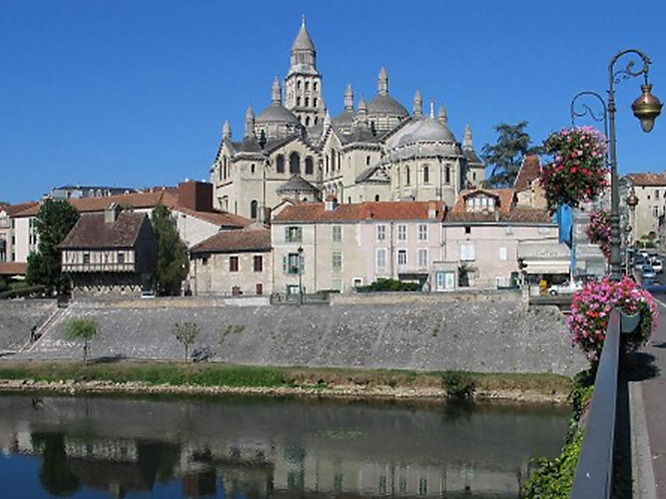Perigeux in the Dordogne
The capital of the Dordogne department is set towards the north of the region. It is many miles from the Dordogne River and is actually on the Isle River. It is a very large city. It has a small old town but has a large built up industrial area.

Having been to most of the other beauty spots and attractive towns in the Dordogne prior to visiting Perigueux I was disappointed with this city. Perigueux is most busiest on market days, Wednesday and Saturday. A few miles to the west of Perigeux is the Chancelade Abbey.
The city of Perigueux has been in existence since Neolithic times. It grew from a village into an important Roman centre. The Roman Vesone Tower and the remains of the amphitheatre can still be seen. The Middle Ages were not kind to Perigueux. It was involved in the Hundred Years War and other conflicts in the region. Chateau Barrière dates from the early middle ages.
The 16th century was the start of a more prosperous time. Saint-Etienne church (once a cathedral) dates largely from the 16th century when it was reconstructed, although parts of the earlier church on the same site can still be seen. From the 1700's onwards, Perigueux became an important regional centre.
When visiting Perigueux head for the cathedral Saint Front, which also retains its attractive arched cloisters. The area around it contains an interesting medieval and renaissance centre, with attractive boulevards and streets lined with medieval houses. Walk towards the river, there you will find an group of particularly attractive medieval houses - the 'maison Lambert', the 'maison des consuls', and the 'hotel de Lur'. These are best admired from the bridge that crossed the river at this point. The 'museum of art and archaeology of Perigord' is found in the town and houses important prehistoric and roman artifacts.
Travel books

